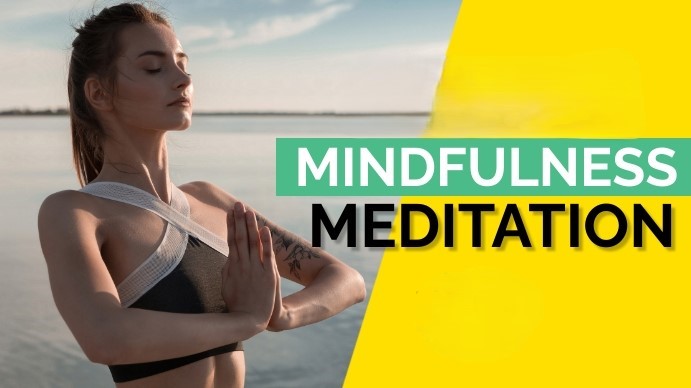
It’s common knowledge that keeping oneself fit and healthy requires a lot of effort and time. What if, however, you were able to simplify the procedure by dividing it into more manageable chunks? Due to the power of routines, this is actually feasible. Little habits are the easy, everyday things we do to give our bodies the fuel and care they need to function at their best. You’ll notice a big difference in your health just by making these minor adjustments, such as cutting back on sugar and switching to healthier snacks. This article will discuss 10 simple lifestyle changes that can significantly improve one’s health.
Consume a daily breakfast
Eating a healthy breakfast can help you maintain a healthy diet for the rest of the day. It provides you with the vitality you require to get through the day, beginning with your morning activities. It’s not necessary to eat a huge breakfast, but you should eat something that will keep you satisfied and energized until lunchtime. Oatmeal, yogurt, eggs, and fruit are all healthy and tasty choices for breakfast.
A healthy breakfast is a great way to kickstart your day if you aren’t already a breakfast eater. Once you’ve established breakfast as a regular part of your day, you can begin trying out various recipes and foods to find your personal favorite.
Increase your intake of healthy produce.
Diets rich in fruits and vegetables are associated with better overall health. They are a great source of nutrients that can aid in maintaining good health and a healthy weight, including fiber. Aim for at least five daily servings of fruit and vegetable consumption. That’s a lot, but it’s simple to achieve if you incorporate them into every meal and snack.
Eat your fruits and vegetables first at meals to get more of them into your diet. Have some fresh fruit or vegetable juice in the morning to get your day off to a healthy start. Supplement your sandwich or wrap with a salad or some cooked vegetables. Don’t forget the rainbow of vegetables to accompany dinner tonight.
Getting the daily recommended amount of fruits and vegetables can be difficult, but these strategies may help.
You can easily make veggie kabobs as an appetizer for a party; keep washed and cut-up vegetables in the fridge so they are ready to eat whenever you are; add diced tomatoes, peppers, carrots, or zucchini to pasta dishes; top morning cereal or oatmeal with sliced bananas or berries; enjoy a fruit smoothie for a quick snack; and much more.
Treat yourself to some baked apples or frozen grapes to satisfy your sweet tooth.
Make sure you’re exercising at least 30 minutes a day.
A healthy lifestyle includes making time for regular exercise. The risks of cardiovascular disease, stroke, and diabetes are all lowered, blood pressure is easier to manage, and mental health is enhanced. A difference can be made in as little as 30 minutes per day.
Numerous options exist for meeting the recommended minimum of 30 minutes of physical activity per day. Try going for a brisk walk around the block, swimming at the community center, or signing up for a yoga class at the gym. Aim for a total of 30 minutes per day, but don’t worry if you can’t find it all at once. Each and every bit helps!
Hydrate thoroughly.
Drinking water is important for your health, but many people don’t realize how crucial it is. More than half of the human body is water, and it is essential to nearly every process that takes place there. Water is essential for the proper functioning of every cell, tissue, and organ in the body.
Water aids in temperature control, aids in joint lubrication, protects organs and tissues, and aids in waste elimination (via urination and perspiration). Fatigue, muscle cramps, headache, dizziness, and other symptoms are all signs of dehydration, which can result from not drinking enough water.
Hydration is essential for all bodily functions, and most healthy adults should aim for eight glasses of water per day. In order to avoid becoming dehydrated, it is best to sip water regularly throughout the day rather than waiting until you feel parched. Keep a refillable water bottle on hand so you can quench your thirst whenever you want. Additionally, if you’re exercising or outside in hot weather, you should take extra care to replenish your fluids.
Reduce your alcohol consumption.
Reducing your alcohol consumption can help you live a longer, healthier life. It’s no secret that drinking alcohol regularly can lead to weight gain due to its high calorie content. There’s also the risk of becoming dehydrated and getting a headache. Water is your best bet for hydration, but if you choose to partake in alcoholic beverages, do so sparingly.
Stop smoking
One of the healthiest decisions you can make is to finally kick the nicotine habit. Cancer, cardiovascular disease, and stroke are all greatly exacerbated by smoking. Chronic obstructive pulmonary disease, tuberculosis, and rheumatoid arthritis all have this as a major risk factor. Stopping smoking is the best thing for your health if you are a smoker. Counseling and pharmaceutical aid are just two of the options for kicking the habit.
Obtain a sufficient amount of rest.
It’s common knowledge that not getting enough sleep can have negative effects on health. Some simple adjustments can help you get the sleep you need if you’re having trouble doing so.
The first step is to establish a regular sleep-wake schedule. You’ll find it less of a struggle to get to sleep at night because of this improved adherence to your body’s natural sleep cycle. An ideal sleeping environment includes total darkness, silence, and a cool temperature. Finally, try to limit your intake of caffeine and time spent in front of electronic devices before turning in. Both of these things can make it difficult to get to sleep and stay asleep.
By implementing these suggestions, you should soon be sleeping better and waking up feeling refreshed.
Take care of yourself
There is a good chance that you, like the majority of the population, experience some form of stress on a daily basis. Though some degree of stress is expected and even required for survival, chronic or extreme stress can have severe negative effects on health.
You can take care of yourself and reduce your stress levels by doing a variety of things. A few ideas are as follows:
Maintaining a regular exercise routine is an excellent strategy for managing stress. It facilitates the discharge of mood-enhancing endorphins.
Eating well can help your body deal with stress. Fruits, vegetables, and whole grains should make up a large portion of your daily diet. High-sugar and processed food consumption has been linked to increased stress.
Sleep well; adequate rest is essential for keeping stress in check. An average adult needs 7–8 hours of sleep per night. If you find that you are not getting enough sleep, it is recommended that you create and adhere to a regular sleep schedule.
Try some meditation or mindfulness: These practices can help you forget about the past or the future and live in the here and now. You should find a method of meditation that suits your needs from the many available.
Take care of your weight
Keeping your weight where it should be is one of the best things you can do for your health. Maintaining a healthy weight has many health benefits, including a lower risk of developing cardiovascular disease, stroke, and type 2 diabetes.
You can help yourself stay at a healthy weight by doing a few things. As a first step, make sure you’re eating a healthy diet that’s rich in a variety of colorful produce, whole grains, and lean proteins. Second, make exercise part of your routine. Do some sort of aerobic activity at a moderate intensity for at least 30 minutes on most days of the week. Lastly, make sure you are keeping up with regular checks of your weight and body mass index (BMI).
Consult your doctor or a registered dietitian if you are having trouble losing weight or keeping it off. You can get advice and assistance from these experts, who will push you in the right direction.
It’s important to maintain a schedule of regular checkups.
Having regular checkups is crucial, even if you feel fine. This is because many diseases and disorders, such as high blood pressure and diabetes, often show no symptoms at all. If you get checkups on a regular basis, you can catch these diseases in their early stages and get better faster. Regular checkups provide your doctor with an opportunity to evaluate your health and suggest improvements.









